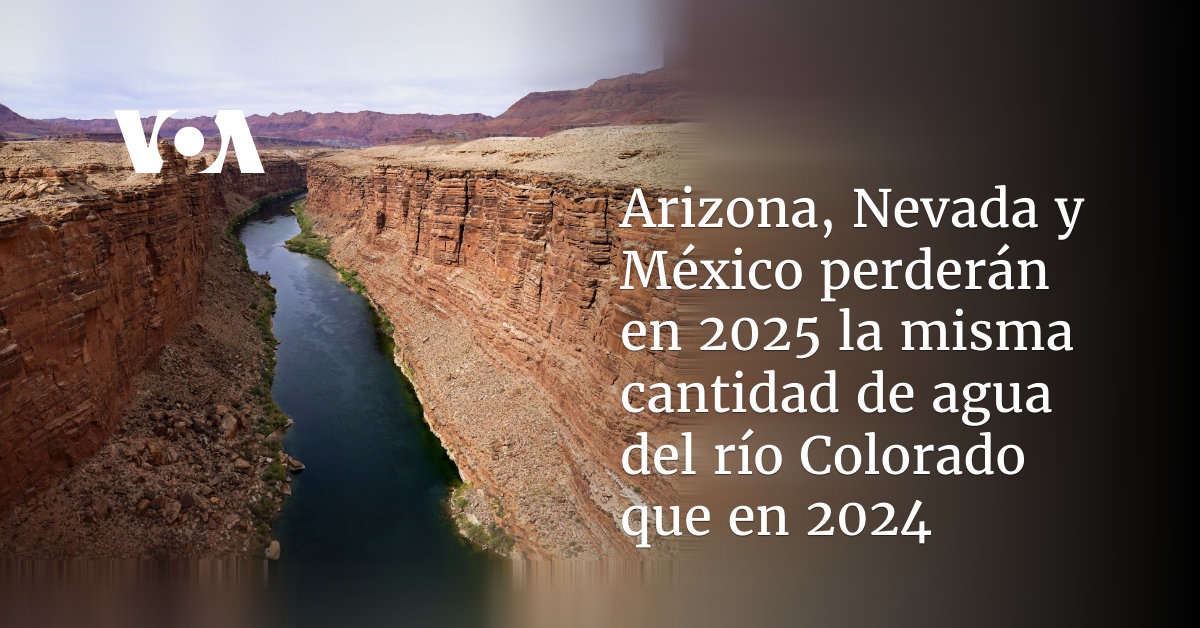WASHINGTON —
Arizona, Nevada and Mexico will continue to live next year with less water than Colorado River after the U.S. government announced water cuts on Thursday to preserve current supplies. The 40 million people who rely on the endangered river will continue to experience long-term hardship.
The 1,450-mile-long waterway runs through the western United States and also supplies water to cities and farms in northern Mexico. In the American West, it supplies water to seven states, more than two dozen Native American tribes and irrigates millions of acres of farmland. It also produces hydroelectric power used throughout the region.
Years of overexploitation, coupled with rising temperatures and drought, have caused the flow of the Colorado River to decline compared to past decades.
The U.S. Department of the Interior announces water availability for the coming year months in advance so cities, farmers and others can make plans. Officials rely on water levels in Lake Mead — one of the river’s two main reservoirs — as indicators of its flow.
At those levels, Arizona will again lose 18 percent of its allotted Colorado River water, while Mexico’s allotment will be reduced by 5 percent. The reduction for Nevada — which receives far less water than Arizona, California or Mexico — will remain at 7 percent.
The cuts announced Thursday are in the same “Tier 1” category that they were in this year and in 2022, when the first federal cuts to the Colorado River were implemented, exacerbating the river’s crisis. Even deeper cuts were implemented in 2023, with Arizona farmers hardest hit.
Heavier rainfall and water-saving measures in Arizona, California and Nevada have improved the near-term outlook somewhat for Lake Mead and Lake Powell, located upriver from the Mead on the Utah-Arizona border.
Authorities reported Thursday that the two reservoirs were at 37 percent of their capacity.
They praised ongoing efforts by Arizona, California and Nevada to save more water, which will remain in effect through 2026. The federal government is paying water users in those states for much of that conservation. In the meantime, states, tribes and others are negotiating how they will share the river’s water after 2026, when many of the guidelines currently governing the river will no longer be in effect.
Tom Buschatzke, director of the Arizona Department of Water Resources and the state’s lead representative in those negotiations, said Thursday that Arizona’s water users had “committed to incredible conservation … to protect the Colorado River system.”
“Future conditions are likely to continue to require difficult decisions,” he added.
Connect with the Voice of America! Subscribe to our channels YouTube, WhatsApp and to newsletter. Turn on notifications and follow us on Facebook, X e Instagram.


